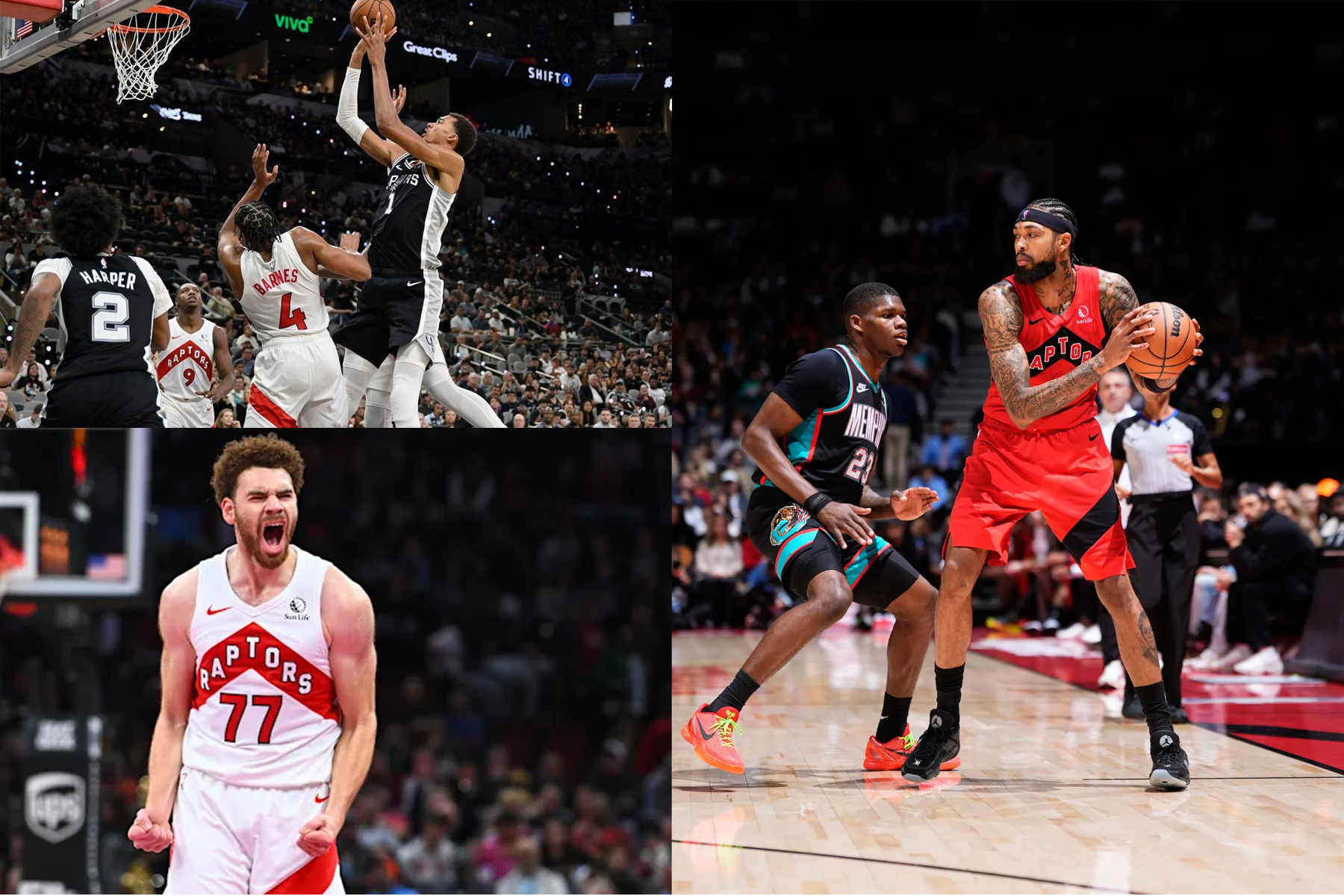The Toronto Raptors begin the 2025-26 NBA season with cautious optimism and a clear objective: to return to playoff contention after three disappointing seasons. If the Raptors are to re-establish themselves as a postseason team, they must strengthen three core areas: roster cohesion, offensive structure and defensive discipline.
The Raptors’ primary obstacle in the 2024-25 season was inconsistency. Injuries and midseason trades forced Head Coach Darko Rajaković to cycle through unstable lineups. This resulted in a team that rarely built chemistry; their most used starting five logged fewer than 10 games together. Their lack of continuity directly contributed to defensive breakdowns and late game inefficiency.
Entering this season, Toronto’s rotation features Scottie Barnes, RJ Barrett, Immanuel Quickley, Jakob Poeltl and the newly integrated Brandon Ingram. The success of this group will depend on consistent availability and role definition. Rajaković must resist the temptation to over-experiment. Establishing a reliable eight-to-nine-man rotation early will allow players to develop synergy and clarity of purpose on both ends of the floor.
Toronto’s offensive structure last season ranked among the NBA’s least efficient, hindered by poor spacing and minimal ball movement. The Raptors averaged just 24.6 assists per game (26th overall) and shot 34 per cent from three-point range (25th). These metrics reflect a stagnant half-court offence overly reliant on isolation and mid-range scoring.
To compete with more dynamic Eastern Conference offences, Toronto must prioritize spacing and tempo. Barnes has shown the ability to orchestrate from the high post, but his effectiveness depends on surrounding shooters who can punish defensive collapses. Barrett and Quickley must improve as catch-and-shoot options, while Gradey Dick’s development as a consistent perimeter threat could help stretch the floor. Incorporating more motion principles and off-ball actions will also help the Raptors generate cleaner looks and reduce their overreliance on individual shot creation.
A realistic target should be to elevate the team’s offensive rating into the league’s middle tier. Achieving that would likely translate to a 6-8 win improvement, placing Toronto within range of the play-in tournament.
During their 2019 championship run, the Raptors were defined by defensive precision and adaptability. That identity has eroded in recent years. Last season, Toronto ranked near the bottom in defensive rebounding percentage and transition defence, allowing opponents to control the pace and rhythm of the court.
A return to playoff relevance requires a reassertion of defensive standards. Poeltl’s presence provides interior stability but perimeter defence remains inconsistent. Barnes and Barrett are capable defenders who must commit to consistent on-ball pressure and disciplined rotations. Team communication, particularly in transition, will be crucial, as the Raptors allowed over 16 fast-break points per game last season — one of the league’s worst marks.
Coach Rajaković’s challenge is to align effort with structure. Defensive accountability must become a non-negotiable component of the team’s culture, not a variable that fluctuates with shooting success.
The Eastern Conference remains competitive but not impenetrable. Outside of established powers like Boston, Milwaukee and New York, several mid-tier teams like Chicago, Brooklyn and Washington are in transitions. If the Raptors maintain their health and secure modest offensive improvement, a record between 38 and 42 wins is achievable, which historically positions a team within the 8th-10th seed range.
Toronto’s internal expectation, echoed by Barnes and Rajaković during media availability, is to “end the rebuilding phase.” That goal will only materialize through sustained execution and collective accountability, not individual highlights.
For the Raptors, returning to the playoffs is not a question of talent, but one of coherence. What the franchise lacks is consistency in identity and discipline. If Toronto can translate stability and structure into nightly effort, the 2025-26 season could mark the beginning of a renewed competitive era rather than another transitional campaign.

